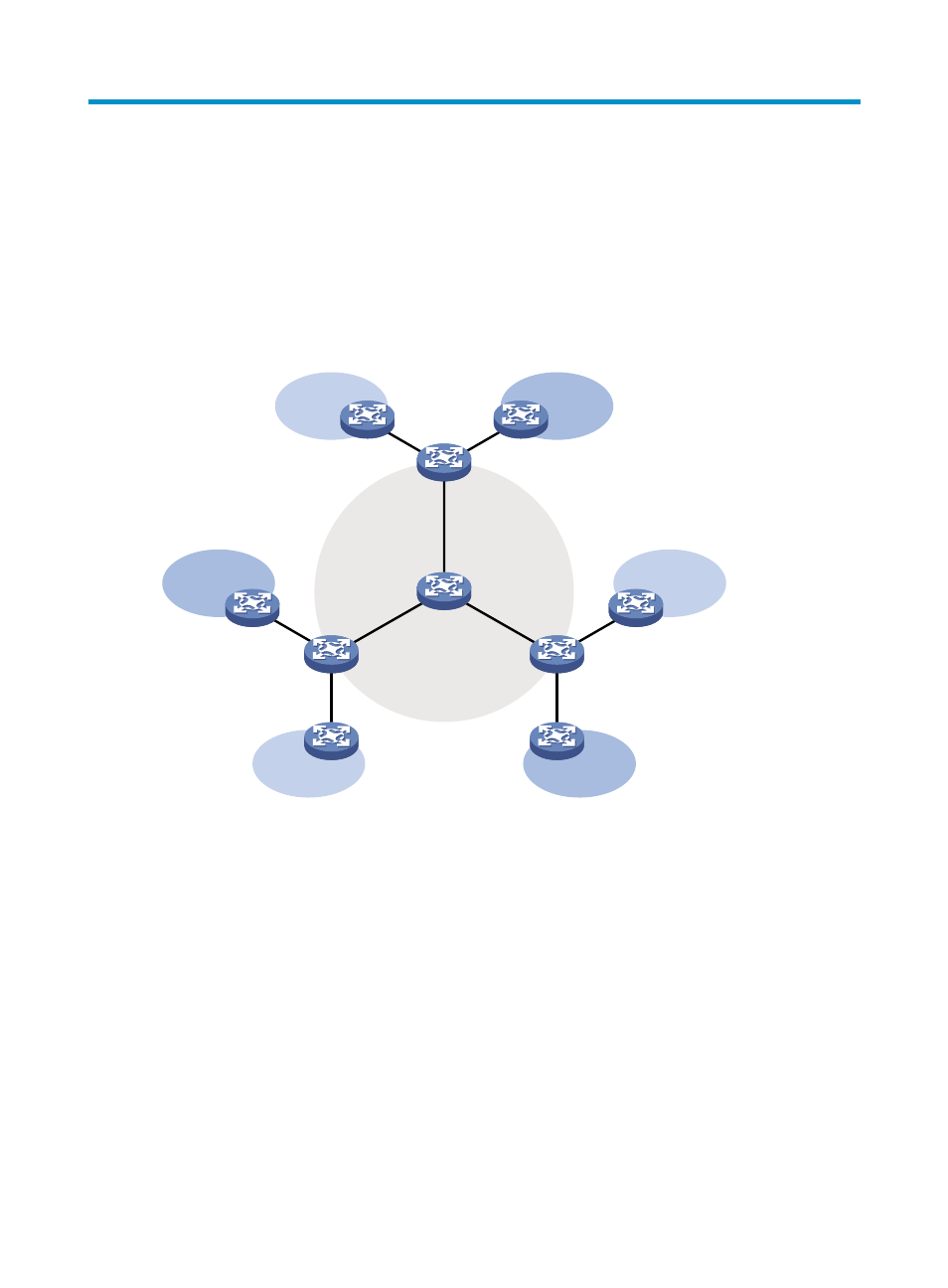Configuring multicast vpn, Overview – H3C Technologies H3C S12500 Series Switches User Manual
Page 254

238
Configuring multicast VPN
Overview
The term "router" in this document refers to both routers and Layer 3 switches.
Multicast VPN is a technique that implements multicast delivery in virtual private networks (VPNs).
Figure 64 Typical VPN networking diagram
A VPN is comprised of multiple sites and the public network provided by the network provider. The sites
communicate through the public network. As shown in
, VPN A comprises Site 1, Site 3 and Site
5, and VPN B comprises Site 2, Site 4 and Site 6. A VPN involves the following types of devices:
•
Provider (P) device—Core device on the public network. A P device does not directly connect to CE
devices.
•
Provider edge (PE) device—Edge device on the public network. A PE device directly connects to one
or more customer edge (CE) devices, and processes VPN routing.
•
CE device—Edge device on a customer network. A CE device can be a router, a switch, or a host,
that implements route distribution on the customer network.
As shown in
, the network that runs multicast VPN carries independent multicast services for the
public network, VPN A, and VPN B. A PE multicast device at the edge of the public network supports
multiple VPN instances, and operates as multiple independent multicast devices. Each VPN forms a
plane, and all these planes are isolated from one another, as shown in
. For example, as shown
in
, PE 1 supports the public network, VPN A, and VPN B. You can regard these instances as
VPN A
Site 1
VPN A
Site 3
VPN A
Site 5
VPN B
Site 2
VPN B
Site 4
VPN B
Site 6
PE 1
PE 2
PE 3
CE 1
CE 2
CE 3
CE 4
CE 5
CE 6
Public network
P